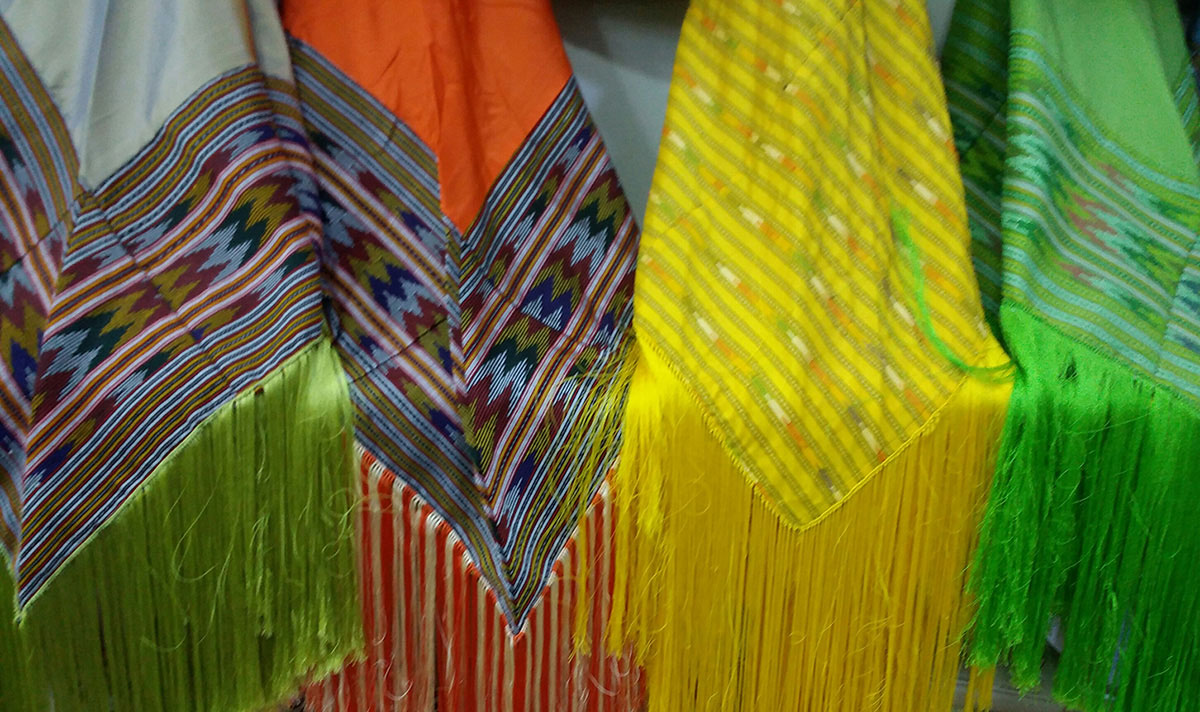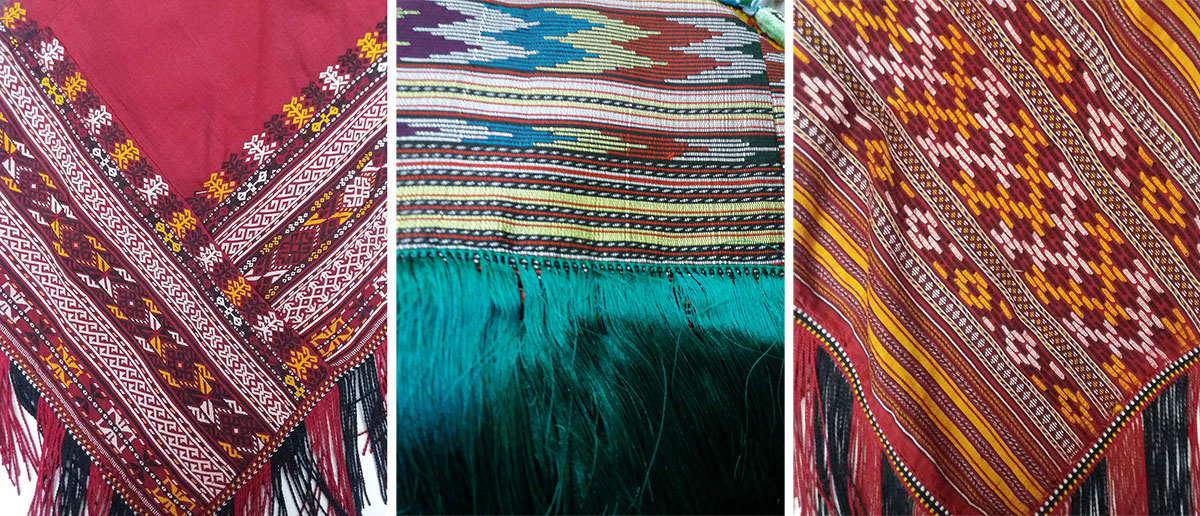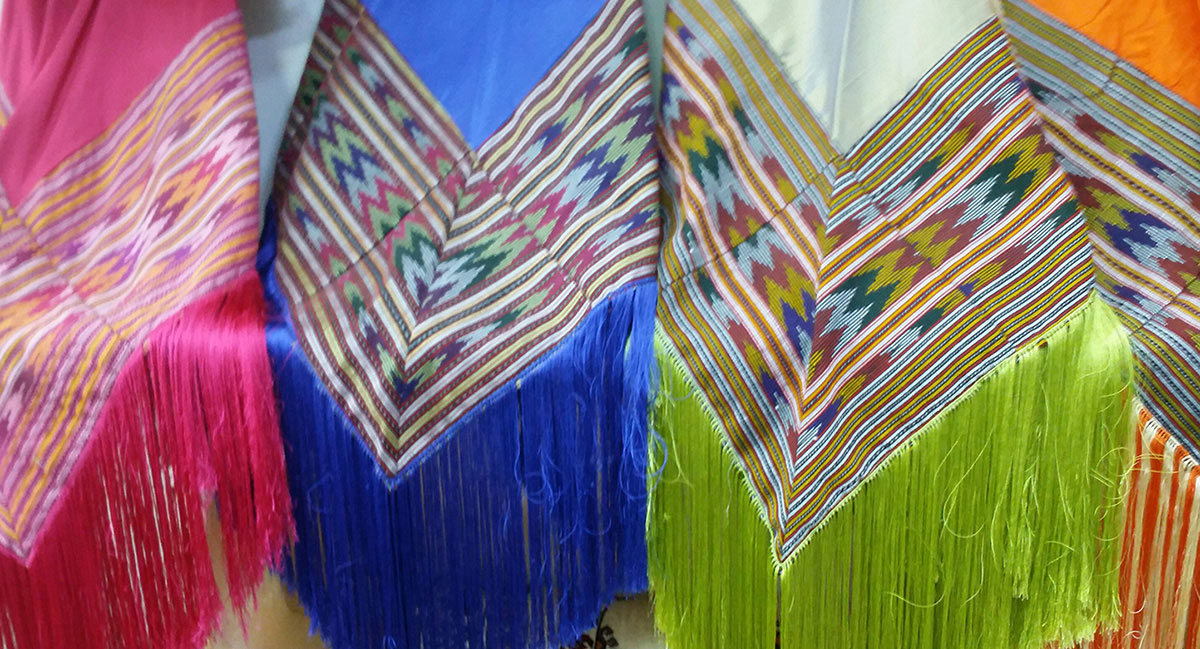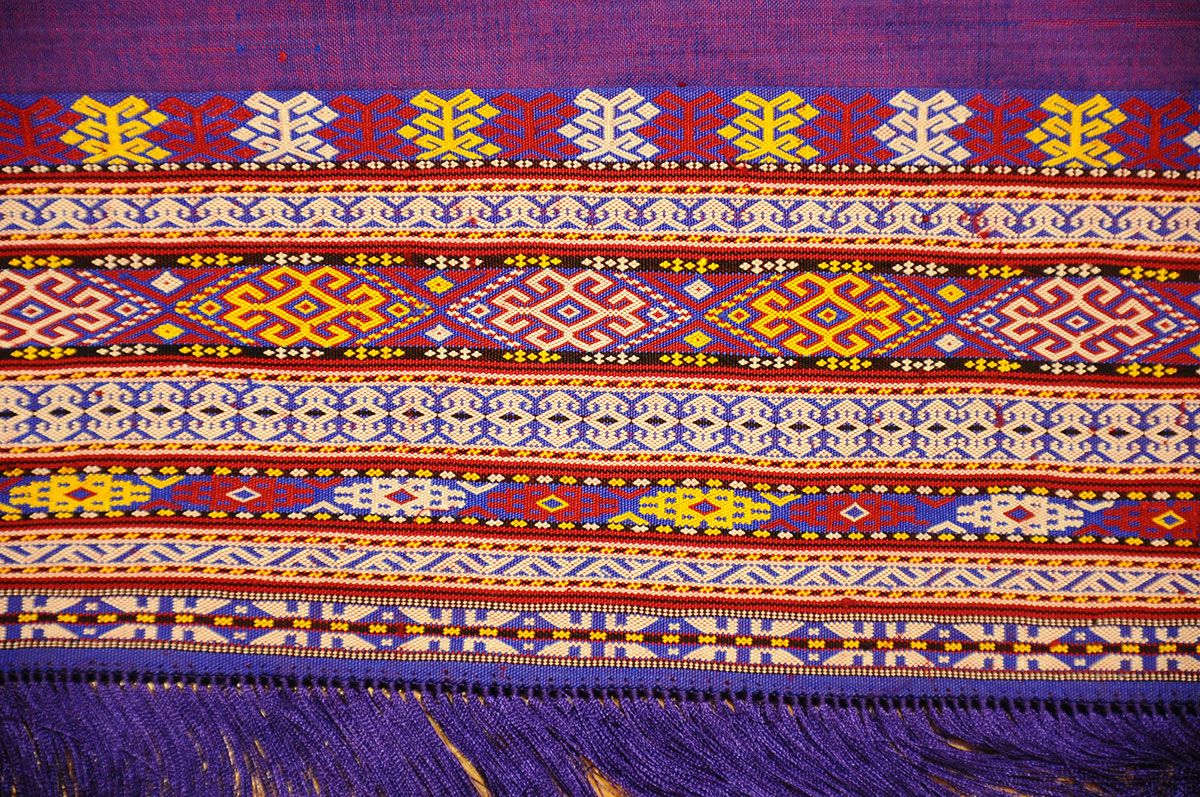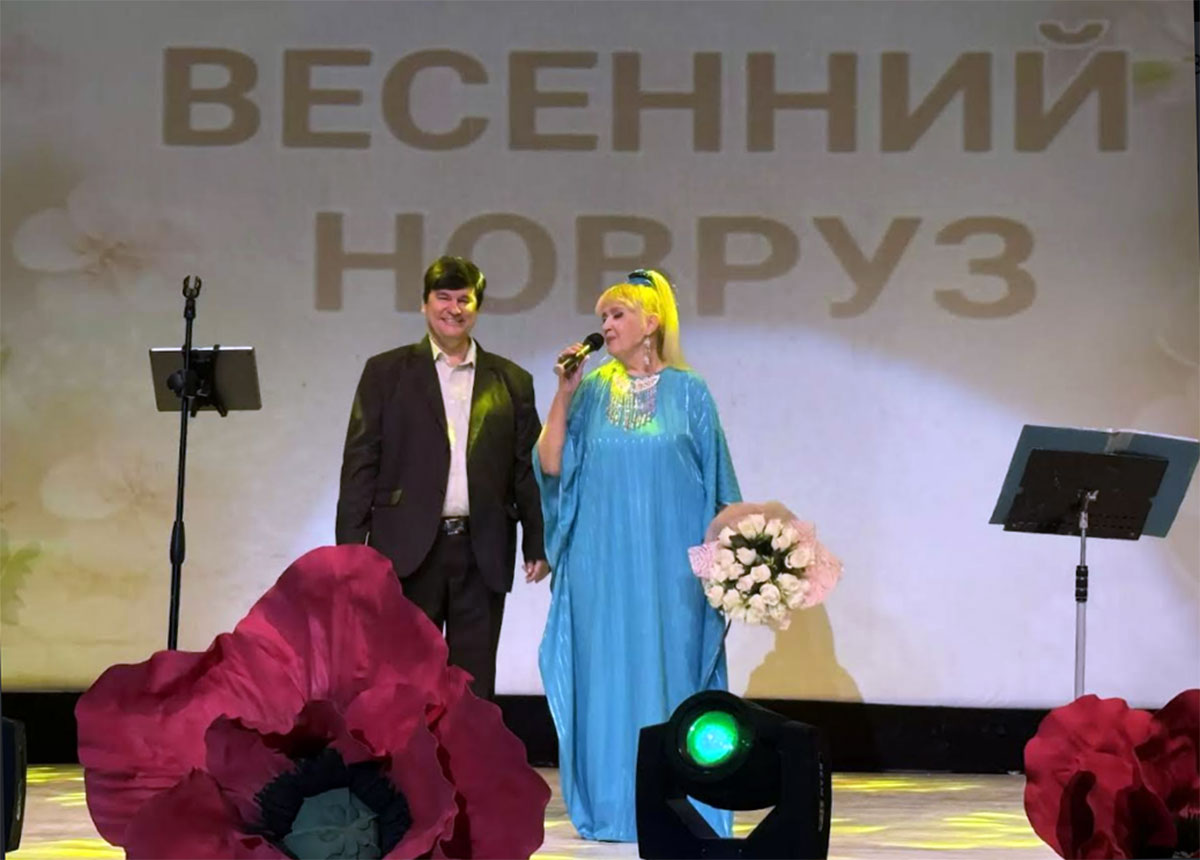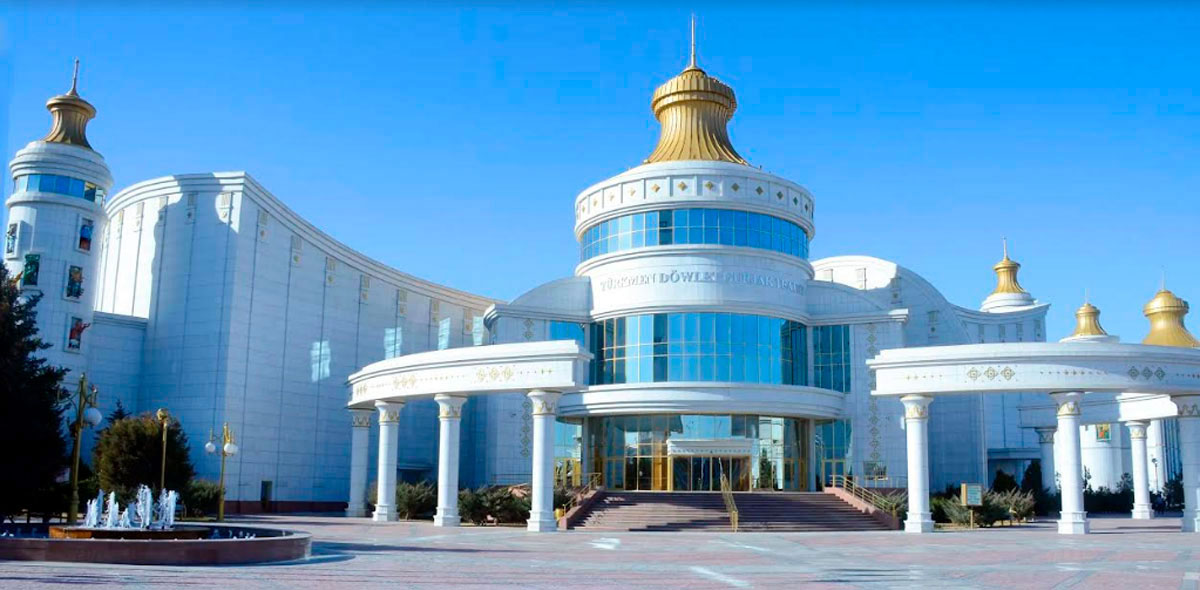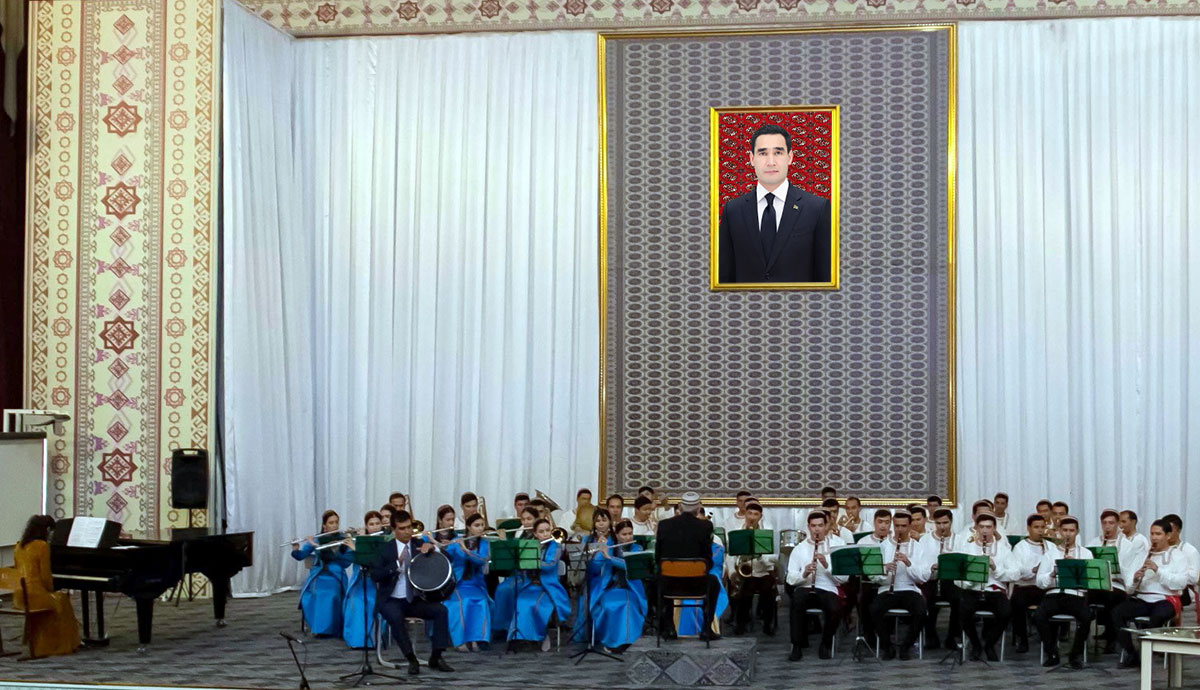Headscarves and shawls hold special importance among the Turkmen nation’s unique, world-renowned crafts, which are a source of national pride and identity. The colorful diversity of headscarves pales in comparison with what Turkmen women have created as part of the traditional bridal attire. It is a homespun düýpli gyňaç headscarf (a shawl, to be more precise). It is the largest of all and the most beautifully expressive. Back in the past, these richly patterned masterpieces added a finishing touch to the traditional Turkmen woman’s national outfit.
Düýpli gyňaç headscarves are a distinct and unique symbol of Turkmenistan. Almost in every family there is a much-treasured grandmother’s scarf made with love and skilled craftsmanship.
Married women used to wear düýpli gyňaç head coverings over a tall headpiece, called börük or topby. This custom began to fade in the 1960s and 1970s. However, at present, the headscarf is frequently used during the national wedding ceremony ritual when the bride’s maiden headdress is replaced with that of a married woman. Some other changes that took place over time resulted in making headscarf wearing a more practical and convenient experience and less restrictive, while in keeping up with folk traditions.
Of all ethnic groups of Turkmens, düýpli gyňaç headscarves hand-woven by the Teke are the most beautiful. These scarves are totally unique as they are made only in Turkmenistan. No Kazakh, Kyrgyz or Uzbek women wear anything like that. The silk fabric boasts such vibrant colors and the play of light on its surface that women value it more for its aesthetic beauty than for its price.
Triangular-shaped düýpli gyňaç headscarves known as agyr gyňaç are rather heavy because of their larger size. Red in color and made out of several strips (up to eight) of fabric sewn together, they have quite big patterns and can be more than 3 meters long. The headscarves are embellished with a multiple row pattern woven on a loom and with colorful silk fringe edges. To add a totally unique look and elegance every thread is tied in a knot.
In decorative and applied arts, ornamental motifs are clearly divided into several groups: floral, geometric, zoomorphic, etc. Used on fabrics, geometric designs cover the entire surface evenly, creating a sense of rhythm. Alternating stripes woven in two or three rows follow a distinctive pattern and vary in color and width: uniform color stripes run along the fabric, setting the tone to the entire design. A colorful (white, yellow and black) flowing line on either side of the stripe makes the motifs more dynamic and come to the front.
At the same time, achromatic colors used in ornaments allow accent colors to appear less intense. With a riot of color and a wealth of patterns, these headscarves never look gaudy, garish and flamboyant. They are expressive enough to be unique and are visually well balanced. The delicate patterns are created so flawlessly like a symphony played by different instruments that make a harmonious, seamless whole.
Looms have been used since ancient times. Hand-operated looms can be still found in some rural households. It takes considerable effort, hard work and patience to weave on them. Today, craftswomen still continue to use simple vertical looms, wooden frames onto which warp yarns are stretched and fixed, which go back far into the mists of time.
Weaving patterned cloth is much more technically challenging and demanding than hand-embroidery, especially as patterns are woven facedown and created along with the fabric itself. That is why weavers use mirrors to see how the classical pattern is being formed. The hardest thing is to calculate the whole ornamental motif since it demands perfect precision and technical excellence. Weaving techniques allow creating various motifs and distributing them all over the fabric.
There are a great number of patterns and designs, and each of them conveys a concrete message. One should decipher the secret code behind every pattern to understand what information it communicates.
The basic outlines, in which motifs are arranged on the headscarves, are lines. Ornaments consist of parallel rows: narrow, medium-wide and wide. There is also a primary pattern, which looks like a wide line and runs across the fabric. This pattern boasts four traditional colors: white, black, and yellow intertwined on a red background.
Noteworthily, the colors are arranged in certain combinations not only in this old pattern but all over the düýpli gyňaç headscarves, which deeply impress with their finely created ornaments.
Parallel lines, geometric designs and distinctive repeats make the patterns closely comparable to keşde hand embroidery. Many motifs are truly reminiscent of hand embroidery stitches. Fabric motifs are similar to those used in hand embroidery and handmade carpets, as well.
The socio-economic changes cause traditions to die out. However, some traditional practices manage to survive. This can be explained by the fact that the Turkmen people cherish their traditions and keep them alive, and the older generation plays an important role in preserving them.
Our grandmothers used to wear these amazingly beautiful shawls. But fashion trends often make a comeback. And the düýpli gyňaç headscarves have come into fashion again now. There has been a resurgence of interest in the headscarves and traditional clothing among young people.
At present, the distinction between headdresses worn by women to signify their marital and social status is being erased. Headscarves still remain very popular with older women. Traditional folk costumes have gained in popularity, and vintage elements and accessories have been successfully reintroduced into modern clothes. Traditional ornamental patterns have found their ways into new articles of clothing. Efforts are now being made to offer a wide selection of the headscarves and to add a modern twist to them.
Ready-made fabrics with traditional patterns have found favor among local fashionistas who love folklore elements. They are now sewn to dresses instead of national embroidery, and used to make handbags, purses, and scarves to name but a few. This has marked a new trend in stylish decorative accessories for Turkmen women’s outfits.
One of the Turkmen nation’s greatest creations, the düýpli gyňaç headscarf with its timeless beauty is not just an item of clothing. It is part of history for every Turkmen woman. Over the centuries, these exquisitely beautiful folk art masterpieces have taken on symbolic importance thanks to their traditional patterns. Turkmen women wear them with great pride. The scarves make a wonderful and precious present, because they embody the Turkmen people’s true spirit and are part of our culture. This decorative art was created and bequeathed to us by our ancestors. We wear these scarves, hand them down to our children and give them as gifts to representatives of other nations.
Our aim is to rekindle interest in this ancient art, to unlock the secrets of making these headscarves which are a must-have for every modern woman. Not only should patterns be in keeping with traditions, they should be in fashion as well. The düýpli gyňa shawls are an essential part of the Turkmen nation’s customs, traditions, and spiritual values.
This is why we believe that the traditional craft, düýpli gyňa scarves and their patterns are worthy of being included on the UNESCO Representative List of the Intangible Cultural Heritage of Humanity.
Ajap BAYRIEVA, an ethnographer, Ph.D. in History
Photo: Ajap BAYRIEVA




